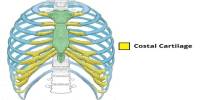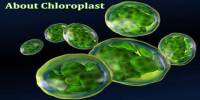A discovery revealed by medical experts at the University of Alberta may help to understand how prion illnesses, such as mad cow disease and chronic wasting syndrome, adapt to spread among different species of animals.
The research team, led by neurologist Valerie Sim, found that the disease appears to have the ability to adapt to mimic and generate new strains with which it comes into contact due to a minute alteration in the nature of the prions. The team has been studying this area for two years.
“Prion diseases don’t always successfully go from one animal to another, but when they do, the process is called adaptation. And we want to figure out what triggers that process to happen, what changes happen within prions to allow the disease to spread,” says Sim, a researcher with the Faculty of Medicine & Dentistry, whose discovery was recently published in the peer-reviewed Journal of Biological Chemistry.
“One of the important things researchers in this field have realized is that if you pass certain strains of prion disease through a number of different hosts, the disease can adapt along the way and increase the number of susceptible hosts. That’s the big concern right now.”
“We want to determine why one prion disease might be able to spread from one type of animal to another and why another strain of the disease can’t.”
We need to pay attention to chronic wasting disease in particular because it has the ability to spread in a different way than mad cow disease. Chronic wasting disease prions can be deposited into the soil and stay there for years, and could be eaten by another animal. How does it evolve from there then?
Valerie Sim
For instance, if a deer suffering from chronic wasting disease is scavenged by another animal, is it possible for the prion disease to enter, mutate, and subsequently infect animals or species that are generally not directly at risk for the illness.
“We hope to understand how these bigger issues develop,” says Sim.
“We need to pay attention to chronic wasting disease in particular because it has the ability to spread in a different way than mad cow disease. Chronic wasting disease prions can be deposited into the soil and stay there for years, and could be eaten by another animal. How does it evolve from there then?”
Sim and her team are carrying out more study in this area, and the striking outcomes they are observing in the lab are supporting their conclusions by being tested on more models.
Sim is employed with the Division of Neurology in the Department of Medicine. Both the Centre for Neuroscience and the Centre for Prions and Protein Folding Diseases have designated her as a cross-appointee.
Her team’s research was funded by Alberta Innovates Health Solutions (AIHS), PrioNet Canada and the Alberta Prion Research Institute.
















